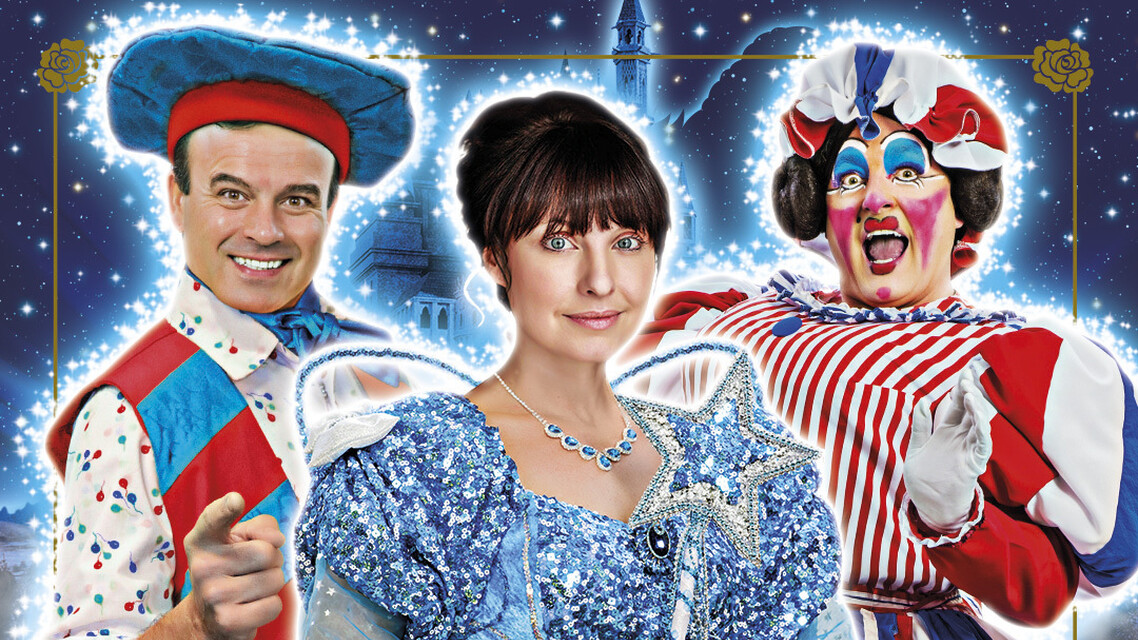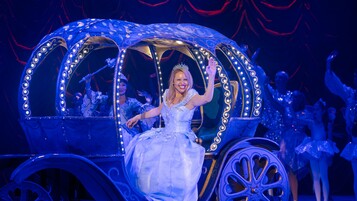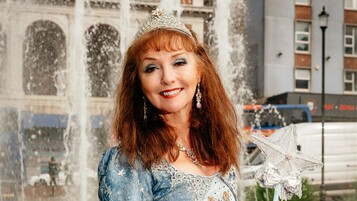News Story
Colourful sets, outlandish costumes, slapstick comedy, gender reversal, and audience participation are all part of why we love pantomime. It's ingrained in British theatre and continues to be popular among children and adults. But how much do you know about how pantomime started and where it came from? Many people consider pantomime to be a relatively recent creation. However,pantomime has evolved over several hundred years to become the impressive spectacle we know and love today.
The impressive longevity of pantomime comes from its ability to evolve and not be afraid to adapt to the tastes and fashion of the time. It's why the productions we enjoy today always feel fresh, modern and relevant. Here we will explore pantomime's colourful and eclectic history.
Panto’s Beginnings: Commedia dell’Arte
Pantomime developed from 16th century Commedia dell'Arte, a street theatre genre that originated in Renaissance Italy. The performances would feature slapstickcomedy and familiar stock characters. Small companies would tour around France and Italy, performing in fairgrounds and marketplaces, telling stories of the clown Pierrot, old man Pantalone and Columbine, a girl who fell in love with the rather wayward servant called Arlecchino. In some versions, Pantalone (or Pantaloon) had a servant called Punchinello, a clownish character who can still be seen today as Mr. Punch, the eccentric puppet.
Performers would wear distinctive masks so audiences could instantly recognise characters, while the actors could make risqué and often topical jokes without being recognised. The actors travelled from place to place to perform before eventually taking their act across Europe. It's known that they visited England several times with playwrights such asShakespeare, Lope de Vega, and Moliere taking inspiration from these Commedia traditions and characters. Meanwhile, the rebellious energy and iconic masks of Commedia's performances would later influence the work of composers and artists such as David Hockney, Picasso, Braque, Stravinsky and Prokofiev.
Panto Arrives in England
From the late 1600s, Commedia dell'Arte characters would regularly feature in English comedy plays after being introduced to the theatre by John Rich, a leading theatre impresario (equivalent to a theatre manager or promoter today). Rich's plays, known as Harlequinades, saw the acrobatic Harlequin take centre stage. The stories involved everything you'd expect to see on a pantomime stage today, such as magic, lovers, acrobatics and comedy chases. Harlequin would use his "slapstick" (often a bat or a sword) to hit scenery and instigate set changes. These plays quickly became a huge success leading to much rivalry between theatres. Actor Joseph Grimaldi took the Harlequin character to new heights in the 1700s while the sets would become more colourful and elaborate.
By Victorian times, pantomime had become a key Christmas event and would include fairytales or stories of Robinson Crusoe told with a witty rhyming style and topical content. Famous names from a variety would take to the stage to perform popular songs and topical comedy.
Enter The Dame
The pantomime dame character that we know today first emerged from the Victorian music halls and tended to take the role of the hero's mother, for example, Dame Trott in Jack and the Beanstalk and Widow Twankey in Aladdin. Audiences relished watching well-known male comedians performing in outrageous costumes and make-up on stage. Like you see today, thedame character was typically portrayed as unattractive, older and common, despite the character thinking of herself as the opposite. She would usually befriend the two principal characters and be instrumental in all the good acts performed in the story. Meanwhile, the Principal Boy was typically played by a woman, giving the Victorian gentleman in the audience a rare glimpse of a shapely ankle. This period also saw the steady rise of the music hall alongside the demise of the traditional Harlequinade.
Father Of Modern Pantomime
Augustus Harris, a dominant figure in West End theatre and often referred to as the father of modern pantomime, encouraged lavish productions and competition between British theatres. When he took over the lease of London's Theatre Royal, Drury Lane, he would put on huge spectacular annual pantomimes that ran from Easter to Christmas. Some of the pantomimes he co-wrote and staged included Little Red Riding Hood, Little Bo-Peep and Hop o' my Thumb, driven by his passion for the old Harlequinade and its lavish scenery, acrobats and clowns. The very last Harlequinade was performed at the Lyceum Theatre in 1939.
The Future Of Panto
Pantomime's ability to adapt and move with the times has helped it survive for hundreds of years. By successfully weaving modern trends and topicality into its established format, panto continues to be one of Britain's most popular and endearing forms of entertainment. While the Commedia dell'arte it derived from has almost disappeared, panto, as we know it today, is a living, growing art form that's always ready to evolve, taking on new ideas from each age. We hope this wonderfully eccentric institution continues to entertain and dazzle audiences for generations.
If this has whetted your appetite for seeing a pantomime this year, why not book your tickets to watch Beauty & The Beast.
© Content provided by Blackpool Grand Theatre & UK Productions Ltd




